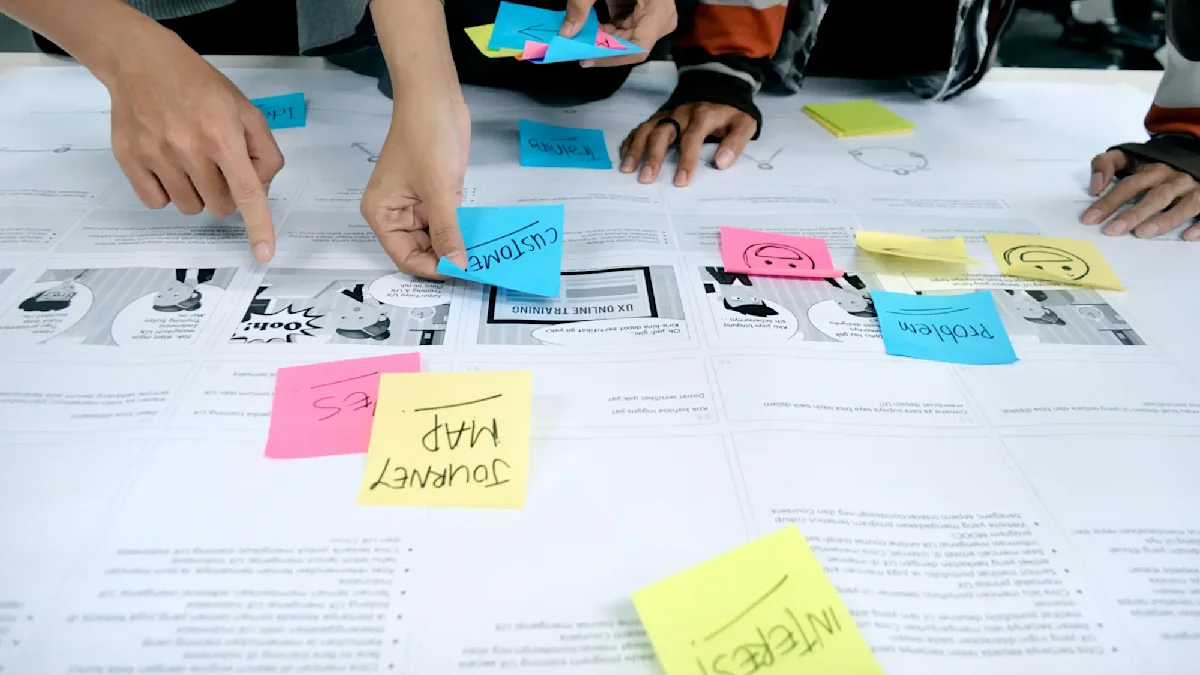AI-Powered B2B SaaS Onboarding: Strategies for Faster Time-to-Value

Every B2B SaaS founder knows the high-stakes moment: a new user signs up. You've won the battle of acquisition, but the war for retention is just beginning.
For too long, onboarding has been a generic, one-size-fits-all process—a checklist of features that feels impersonal and often leads to the dreaded early-stage churn. We’ve all felt it: the confusion, the frustration, and ultimately, the silent abandonment of a tool we thought we needed.
But what if your onboarding experience wasn't a checklist, but a conversation? What if it felt like the product was built specifically for that single new user?
The future of customer success is here, and it's powered by AI-driven hyper-personalization. This guide will show small B2B SaaS founders how to leverage accessible AI tools to create a truly "magical" onboarding experience—one that anticipates needs, solves problems before they arise, and drastically improves your Time-to-Value (TTV).
1. The Pre-Flight Check: Analyzing Context Before "Hello"
The biggest challenge in B2B onboarding is the information gap. We often ask the user to fill out a lengthy survey to tell us what they need. But what if the product already knew?
The first magical moment you can create is by using AI to gather context before the user even hits their dashboard.
Strategy: Real-Time Company Analysis
Your company likely has a unique challenge, and our own journey at Churnmate highlights this perfectly:
The Action: The moment a user submits their email during sign-up, fire up a background worker.
The AI Task: Use an LLM (GPT, Gemini, Claude, etc) to scan the user's public-facing website, analyze the company's industry, business model, and primary product offering.
The Personalized Output (The Magic):
If the AI identifies an e-commerce retailer, the system suggests a pre-built cancellation flow focused on return/refund incentives.
If the AI identifies a subscription box service, the system suggests a flow focused on pause/skip options and plan downgrades.
This means that the user's first interaction with your product is not a blank slate, but a configuration that is already 80% optimized for their business. This leapfrogs the generic setup and speeds up their time to their first "Aha!" moment.
2. Predicting Intent: AI-Driven Goal Detection & Role Mapping
After the contextual analysis, the next step is guiding the user to the single most important feature for them. The quickest path to value is the one that bypasses everything irrelevant.
Strategy: Inferring the User’s Mission
Forget asking users to choose from a list of 10 generic templates. AI can predict the user's immediate goal based on their sign-up data and public profiles.
The Action: Analyze the user's job title, company size (from public data), and the industry context gathered in the Pre-Flight Check.
The AI Task: Map this data to your product's pre-defined success paths (user personas).
The Personalized Output (The Magic):
A "Marketing Manager" signing up for your CRM is immediately guided to the lead segmentation and campaign tracking setup.
A "CEO" signing up is guided directly to the high-level analytics dashboard and the team invitation feature.
A "Software Developer" is shown the API documentation and integration flow first.
By intelligently inferring their role and purpose, the AI eliminates the feature-overload feeling and presents the product as a surgical tool specifically designed for their most pressing work.
3. The Onboarding Co-Pilot: Proactive Nudging and Optimization
The most common point of B2B SaaS churn is when a user hits a roadblock during a complex setup or configuration—and they leave instead of asking for help. The future of onboarding doesn't wait for the user to get stuck; it prevents them from getting stuck in the first place.
Strategy: Real-Time Usage Monitoring and Contextual Interventions
Your AI should act as a silent, intelligent co-pilot, monitoring in-app actions and offering help precisely when it's needed.
The Action: Monitor usage patterns and measure against successful onboarding benchmarks for similar users.
The AI Task: If a user pauses on a configuration screen for more than 45 seconds, or clicks the same element multiple times without success, the AI flags the stall.
The Personalized Output (The Magic):
Contextual Tooltips: Instead of a generic "Need Help?" button, a small, personalized tooltip appears: “Hey [User Name], it looks like you’re setting up your API key. For [Your Specific Industry], most users just copy and paste the key directly from the [Integrated Platform Name] settings page. Click here for a direct link.”
Proactive Suggestions: If the user is manually doing a tedious task, the AI can suggest the better way: "Based on your profile, you could save 3 hours a week by setting up our Zapier integration. Would you like to launch the setup flow now?"
This type of proactive, highly contextual support feels less like a help center and more like having a dedicated product expert sitting next to them.
4. Hyper-Relevant Content: Dynamic Walkthroughs and Documentation
Generic onboarding texts are tedious. Imagine if the in-app documentation, video titles, and even the welcome text were rewritten on the fly to match the user's reality.
Strategy: Dynamic Content Generation
AI is brilliant at generating context-aware text, making it a perfect tool for scaling personalized content on lean teams.
The Action: Feed the AI the user's context (Role, Industry, Company Name) and the generic instructional text.
The AI Task: Direct the AI to rewrite the content to be relevant to the context.
The Personalized Output (The Magic):
Walkthrough Titles: A generic step titled "Connect Your Data" becomes: "Let's Connect Your Shopify Store Data."
Example Generation: If your product requires a code snippet, the AI could generate one that uses the user's actual company name or an example relevant to their industry.
FAQs/Help Text: When a user searches the in-app help, the AI surfaces (or generates) the most concise answer, immediately using relevant terminology from their industry.
This level of detail turns your onboarding into a bespoke workshop, convincing the user that your product understands their specific jargon and workflow.
The Magical Takeaway for Small SaaS Founders
The true magic of AI in B2B SaaS onboarding is simple: it allows lean teams to compete with big tech on customer experience.
You don't need a massive customer success team to offer 1:1 personalization. You just need to leverage accessible AI to gather context, predict intent, and proactively guide your users.
By implementing these strategies—from the "pre-flight check" analysis to the proactive co-pilot nudges—you stop wasting your users' time on generic setup. You accelerate them directly to their first moment of value, cementing the product's necessity and dramatically reducing your early-stage churn.
The future of B2B SaaS retention is built on personalization. Start making your onboarding feel magical today.

Anya Sharma
Anya is a seasoned SaaS enthusiast and a keen observer of the digital landscape. With a background rooted in data analytics and customer success, Anya has spent the last decade delving into what makes businesses thrive – and why some don't. She's passionate about helping small to medium-sized SaaS companies, including the vibrant community of Indie Hackers, discover actionable strategies to not just acquire, but retain their hard-earned subscribers. When she's not dissecting churn rates or crafting compelling content, you can find Anya experimenting with new coffee brewing methods or exploring hidden hiking trails. Her mission is to empower businesses with the insights they need to build lasting customer relationships.
![Beyond Basic Bots (BBB): Building a Truly Intelligent AI Support Agent for Your SaaS [Part 1]](https://images.ctfassets.net/t4k6r9ov29zq/6m3qxnKViiTRAM9ErZ6ifA/0b3ea7412979ba27cc9c720a68b0211c/Untitled_design__7_.webp?w=800&q=80)
